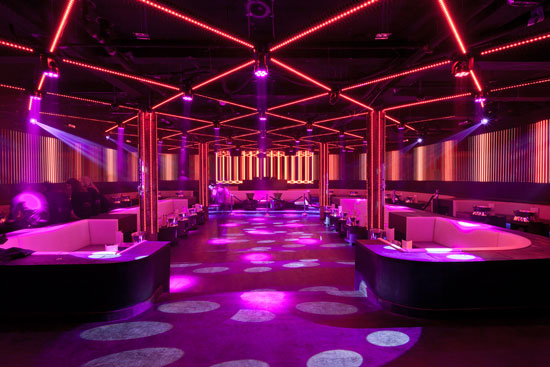A Transformative Strength for Illumination at Improving Movement Floor Visuals
Wiki Article
Lighting plays a critical role in shaping the atmosphere of a dance floor. It can transform a basic space into an exciting setting that improves the total experience for performers and spectators alike. The appropriate lighting can influence the vibe, energy, and even the form of the dance being performed. By using multiple types of lighting, such as spotlights, colored lights, and flashing lights, event organizers can create a vibrant setting that engages the audience and promotes involvement.

One of the primary functions of lighting on a dancing area is to highlight the performers. Focused lights can be used to direct attention on solo dancers or teams, making them the focal point of attention. This method not only displays their actions but also adds a dimension of theatricality to the show. When dancers are lit effectively, their expressions and techniques become more visible, allowing the audience to appreciate their skills. This focused lighting can also help to create a narrative, guiding the audience through the performance.
In addition to highlighting performers, colored illumination can greatly affect the mood of the dancing area. Different colors evoke different emotions; for example, warm colors like red and orange can generate a sense of enthusiasm and vitality, while cooler colors look at more info like azure and emerald can encourage calmness and relaxation. By strategically using colored lights, organizers can control the environment to match the concept of the event or the style of the performance. This considerate approach to lighting setup can improve the complete experience for everyone involved.
Strobe lights and other dynamic lighting effects can also add thrill to a dancing area. These features can create a sense of rhythm and motion that matches the soundtrack being performed. When synchronized with the beat, strobe lights can make the dance floor feel vibrant, inviting dancers to groove in time with the flashing lights. This interaction between light and sound can boost the vitality of the occasion, making it more enjoyable for both performers and audience. The use of such features requires thoughtful consideration to ensure they enhance rather than distract from the performance.
Ultimately, the complete design of the lighting setup is essential for establishing a unified look on the dance floor. A carefully planned lighting strategy takes into account the configuration of the area, the kind of performance being performed, and the spectators' experience. By integrating different lighting methods, such as background lighting, accent lighting, and special effects, organizers can design a aesthetically stunning environment. This focus to specifics not only improves the show but also leaves a memorable impact on the audience, making the event unforgettable. In summary, the transformative power of lighting is essential in improving dance floor aesthetics, creating an captivating and pleasurable encounter for everyone.